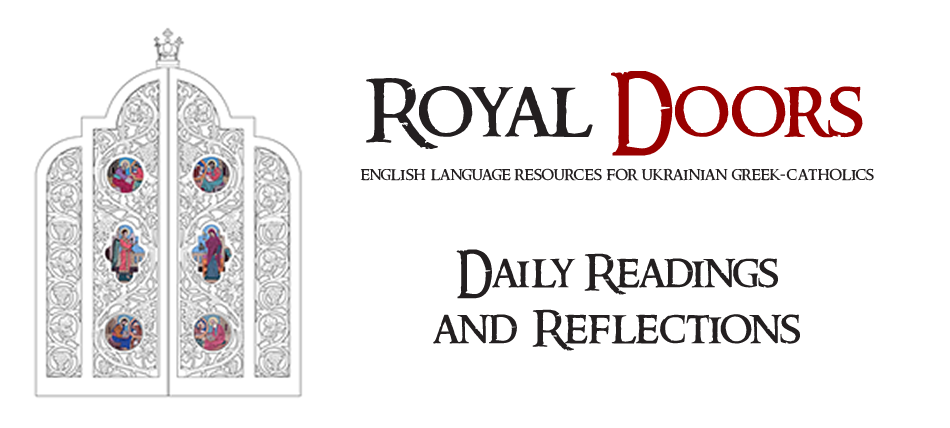by Brent Kostyniuk
 “So, what did you do for summer holidays?”
“So, what did you do for summer holidays?”
This time of the year, as life begins to return to its normal routine, that question seems to be a popular one as people gather at the office water cooler or coffee machine. Unfortunately, as a freelance writer, discussions about summer holidays are generally limited to me talking to myself by the kitchen sink.
However, I know you are interested, so I’m going to tell you what I did do this summer. I went to London, not as Dick Whittington’s famous cat to visit the Queen, but to spend some time at the Ukrainian Catholic Cathedral, just off Oxford Street.
If you are a regular reader of this column lately, you will know that ecumenism has been a recent theme. While in London, I unexpectedly became part of a marvellous ecumenical experience. To begin, let me explain about the Cathedral itself. Aptly named, The Holy Family in Exile Cathedral is the spiritual home of hundreds of Ukrainians who have left their homeland in recent years seeking a better life. These newcomers to England blend in with others who emigrated in the middle of the last century. The Cathedral itself was constructed in 1891, in the Romanesque revival style, as a Congregational church. Interestingly, it was designed by Alfred Waterhouse, most famous as the architect responsible for the design of the Natural History Museum in Kensington, London. The Congregational community was disbanded in 1966 and a year later the church was sold to the Ukrainian Catholic Church.
For many years the interior remained unchanged, with little to distinguish it from a typical English church. Later, an iconostas was created, blending in sympathetically with the beautiful interior. So, the ecumenical experience I encountered began with the Cathedral itself, a blend of Victorian design and Ukrainian tradition. Next, although the Cathedral is the mother church for the Holy Family in Exile Eparchy, with Bishop Hlib Lonchyna its head, territorially, the cathedral is considered to be part of the Marylebone deanery of the Latin Rite Catholic Archdiocese of Westminster.
While the Divine Liturgies at Holy Family are normally sung in Ukrainian, every second Saturday of the month an English Divine Liturgy is celebrated. So, there I was, in a Victorian church, in the middle of London, ready to participate in a Divine Liturgy. To add to the ecumenical spirit, the Divine Liturgy was celebrated by Fr. Mark Woodruff, a member of the Westminster Archdiocese who has bi-ritual faculties; he has been given permission to celebrate the Eucharist in a rite other than his own. The use of English also allowed me to participate as a guest cantor.

Fr. Mark’s homily was a very topical one, dealing with the plight of Catholics in Iraq. It included a very poignant prayer composed by the Patriarch of the Chaldean Catholic Church.
Lord, the plight of our country is deep and the suffering of Christians is severe and frightening. Therefore, we ask you Lord to spare our lives, and to grant us patience, and courage to continue our witness of Christian values with trust and hope. Lord, peace is the foundation of life; Grant us the peace and stability that will enable us to live with each other with fear and anxiety, and with dignity and joy.
-Louis Raphael Sako, Chaldean Catholic Patriarch
Although not intentionally so, the homily continued my ecumenical experience. Fr. Mark’s words not only reminded us all that there is very real persecution of the Church today, but also that modern day martyrs often come from those Churches most Catholics know little about. As a Byzantine Catholic I do know that the Chaldean Church, along with the Syro-Malabar, follows the ancient Chaldean tradition. However, beyond that, my knowledge is limited.
Later, during the ektenias, the following petition was added: “That the faith of the persecuted Christians of Iraq may help them in their tribulations and in their search for sanctuary, and that they may receive compassion and care and come to know again their freedom and peace, let us pray to the Lord.”
A final note on the Liturgy. A group of about thirty Anglicans had come from Cambridge with the express intent of taking part in a Byzantine Divine Liturgy in English, even participating in singing the responses. Before Communion, Fr. Mark took time to explain as non-Catholics, they were unable to receive Holy Eucharist. However, he encouraged them all to come forward at the conclusion of the Liturgy to receive a blessing and a piece of the antidoron – the remainder of the loaf of bread which had been used for the Eucharist. “In this way,” he explained, “we will all be able to break bread together.”
Victorian, Ukrainian, Latin, Anglican, Chaldean. Divine Liturgy that Saturday afternoon was unlike any other in which I had ever participated. As powerful as the experience was emotionally, it left an even stronger spiritual message that we truly are part of a universal Church, united in giving glory to the Lord.
[author] [author_image timthumb=’on’]https://royaldoors.net/wp-content/uploads/2014/09/Kostyniuk-2012-photo-e1410829050199.jpg[/author_image] [author_info]Brent Kostyniuk, who lives in Edmonton, has a bachelor of theology from Newman College and is a freelance writer. He and his wife Bev have been married for 36 years and have eight grandchildren[/author_info] [/author]

